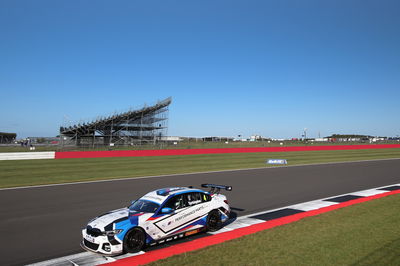Why BTCC tyres are radial...
The difference between radial and crossply tyres is the arrangement of the ply cords and the angle that they run from bead to bead on the tyre.
A radial tyre has ply cords running parallel whereas a crossply tyre has ply cords that run at angles forming a mesh. Radial tyres are normally used for chassis with fully adjustable suspension such as most modern race cars whereas crossply tyres are normally used where there is limited adjustment such as older race cars and some road cars.
The difference between radial and crossply tyres is the arrangement of the ply cords and the angle that they run from bead to bead on the tyre.
A radial tyre has ply cords running parallel whereas a crossply tyre has ply cords that run at angles forming a mesh. Radial tyres are normally used for chassis with fully adjustable suspension such as most modern race cars whereas crossply tyres are normally used where there is limited adjustment such as older race cars and some road cars.
The tread on a radial tyre is supported by a belt. This belt can be thought of as a hoop of stiff material which must be allowed to 'track 'along the road with minimal disturbance in order to do its job. Unlike a crossply, the radial casing alone is not designed to resist cornering forces, it exists mainly to attach the 'hoop' to the wheel.
It is designed to flex laterally to allow the hoop to present itself correctly to the road surface. As the hoop is subject to cornering forces it will tend to roll laterally. If this is allowed to happen when the wheel is vertical then all the load will be carried by its outside edge.
To compensate, it's necessary to lean the wheel over (add negative camber) so that when the tyre is at the limit of roll, the hoop (with its tread on top) will be presented perfectly to the road surface.
Different vehicles will require different levels of static negative camber in relation to their 'camber change' characteristics.
When the car is travelling in a straight line, all the load will be carried by the inner shoulder. If the load exceeds the structural capability of the tyre problems can occur. In extreme circumstances the belt can detach from the casing and flail around (remember Nigel Mansell in Australia) or, initially less dramatic but ultimately just as dangerous, the casing will fracture and the tyre will deflate.
That's why it's important for the Dunlop engineers to work with the teams on the settings for the tyres so that the car is set up for optimum performance with sufficient safety for the tyre.










